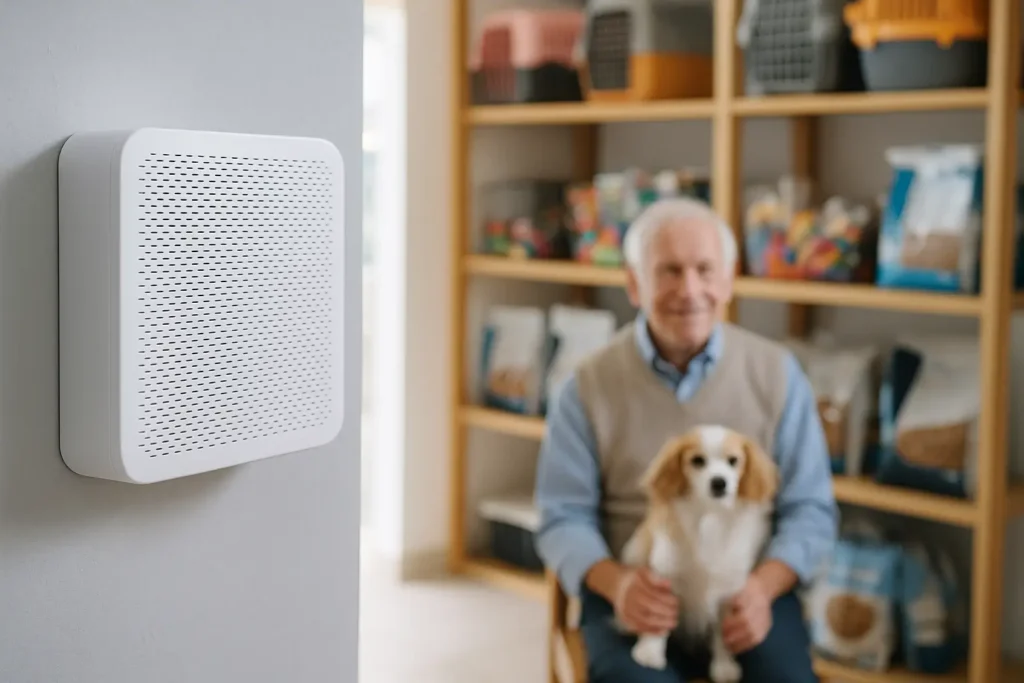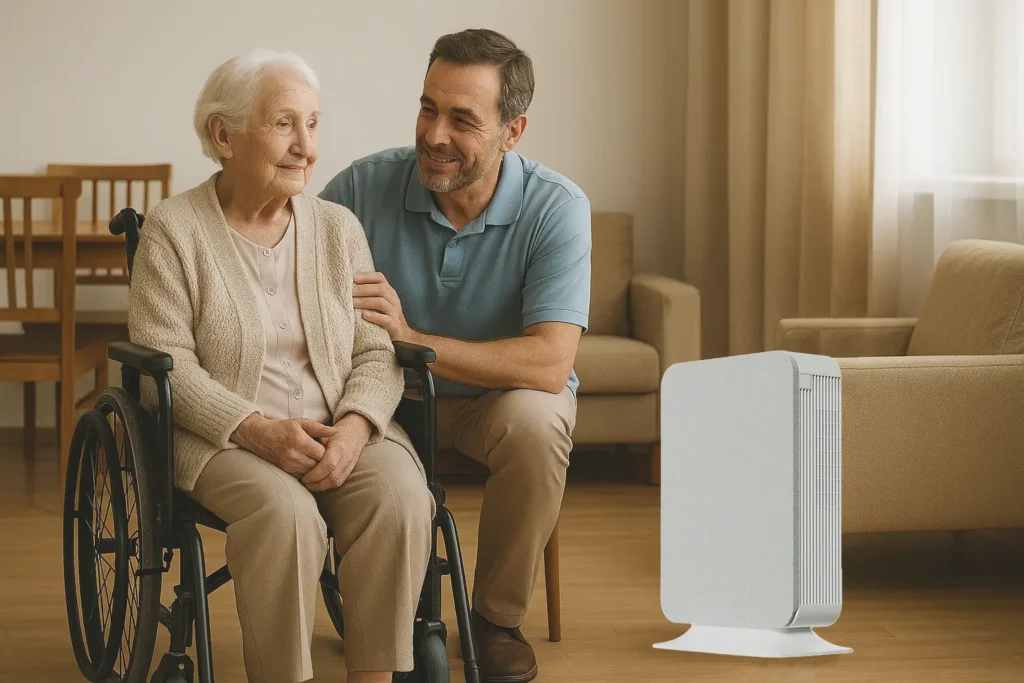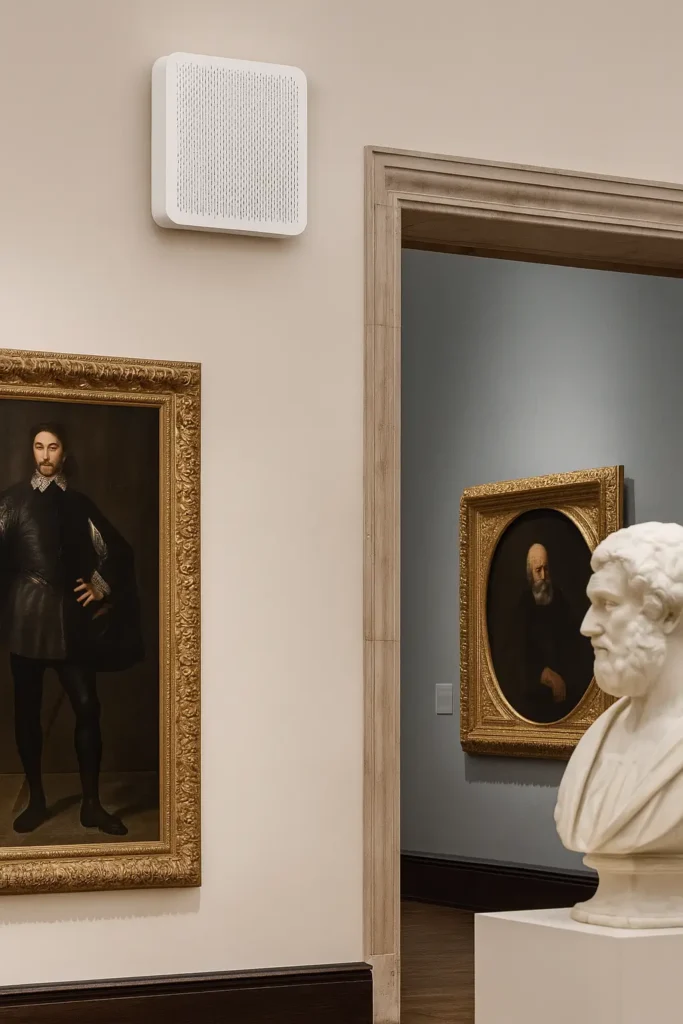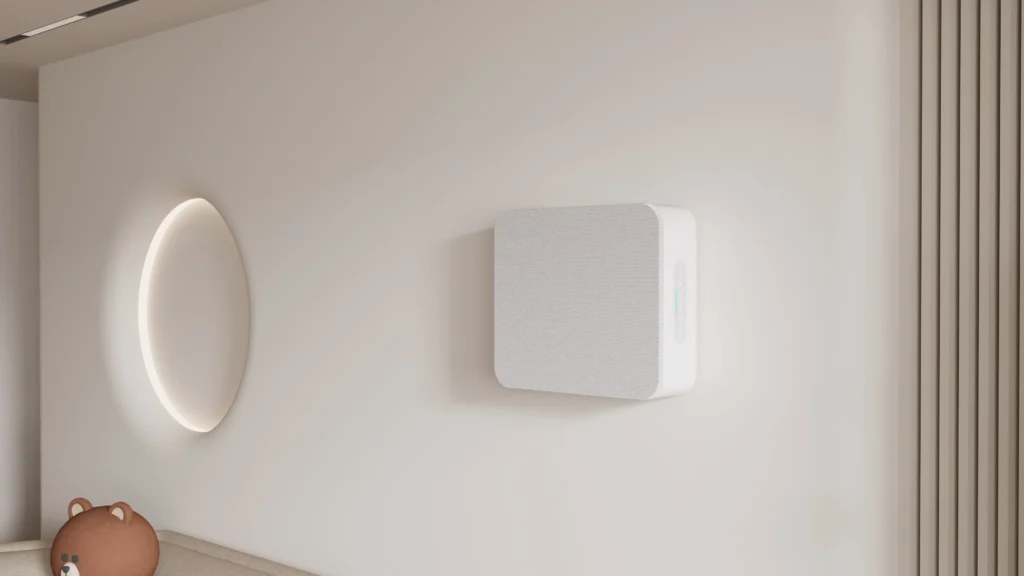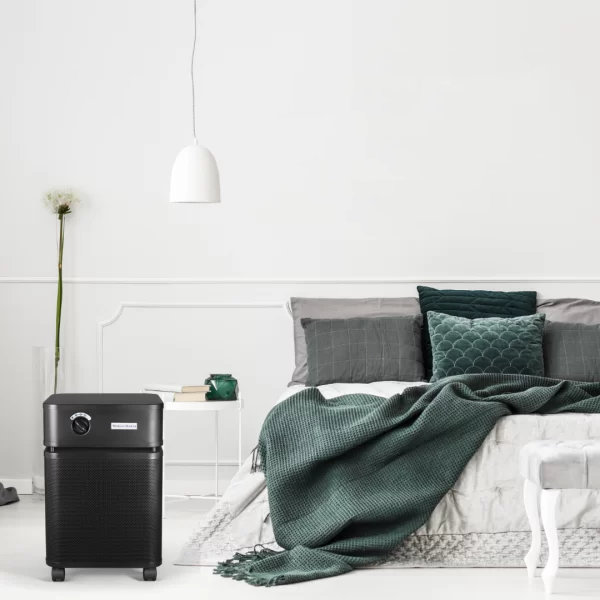After a renovation or construction, dust would immediately settle in. But how can you remove them in the first place? The following strategies in this blog could help out.
Once the building project is complete, many people think that they can automatically settle into their new space. However, that's not something that you can do just yet. After all, you will be dealing with the construction's aftermath, including cleaning the dust.
Dust is a common sight after any building construction. And it is essential that you can remove them to ensure that they will not affect your health. Specks of dust, when inhaled, can lead to symptoms like coughing, sneezing, and allergies.
Read on to learn more about dust and the correct removal strategies, such as using industrial-grade air purifiers.
Where Does Dust From Building Work Come From?
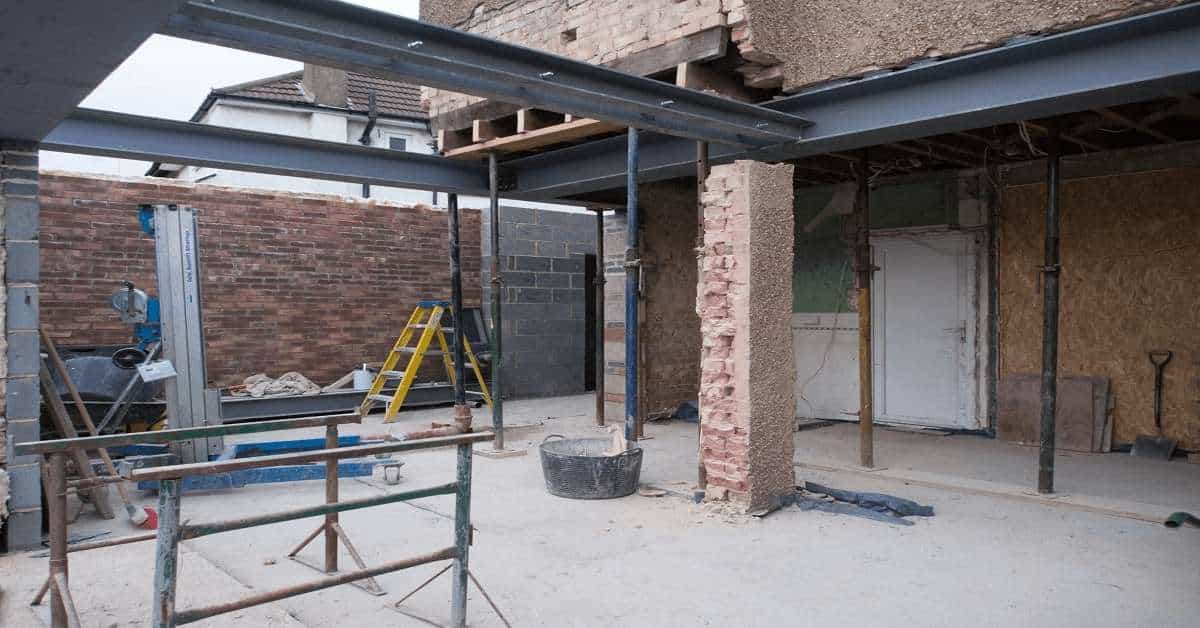
Image Source: Unsplash
Essentially, dust comes from various sources. So the dust in your home or building is different from the dust of other people's property. Specifically, dust is composed of various stuff, ranging from dirt, dead skin cells, pollen, sand, dust mites, and even bacteria.
In our case, the dust came from the residues of materials used in the construction or renovation of your building, such as stone, wood, concrete, and masonry. There’s also silica dust, which is created from sandstone and concrete.Every time they are being put into use, they have "leftovers" that turn into dust. Sometimes, these specks of dust settle on surfaces. Others remain floating in the air, which is prone to be inhaled.
Is it Normal to Have Dust After Building Work?
Absolutely. In fact, it is impossible that you can't see dust after construction or renovation work in your home. They are a by-product of the utilization of building materials.
Furthermore, we can't exclude the fact that the dust may also come from the builders or workers. For instance, the soil or mud stuck in their boots after working outside could be brought inside the building. There, it is possible for the dirt to settle in, leaving your space full of dust.
Effective and extensive removal strategies are required here. As mentioned, the use of powerful AHAM-certified air purifiers may become essential.
Can Dust Be Dangerous?
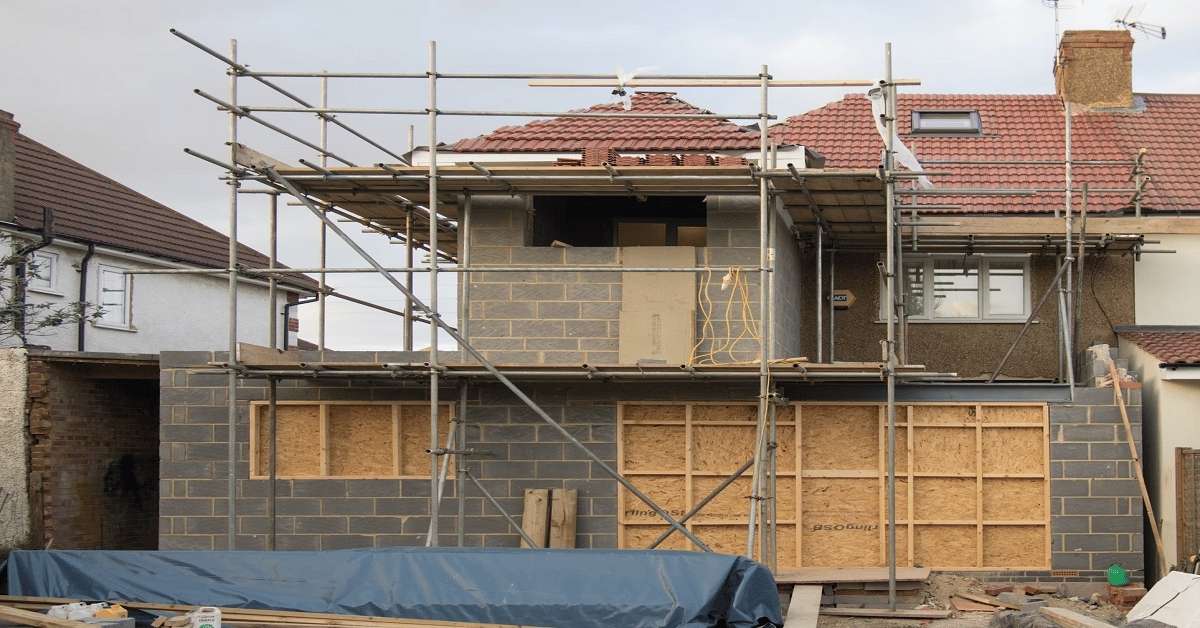
Image Source: Unsplash
Common dust, or the dust in your household, is composed of microscopic contents. They include dirt, skin cells, pet dander, and pollen. Unless you are allergic to these things, dust may not become a severe problem for your health.
But at the same time, there are other forms of dust that are quite harmful. For example, particles of asbestos, wood, and sand can be lethal. In 2018, it was reported that more than 12,000 respiratory-related deaths in the United Kingdom.
Do these particles sound familiar? As mentioned earlier, they are the common residues of construction projects. Asbestos has been banned already in the United States. However, if the building work involves an old property, there's a possibility that asbestos is still there.
Long-term exposure to dust is indeed harmful. That's why effective removal strategies should be implemented.
Common Areas in Building Where Dust is Present
Dust can spread easily, as air can transport and disperse them in various parts of the building. Hence, the extent of their spread may depend on how massive the construction work is.
For example, if the building work is limited to a particular area, then dust won't spread that much. If the project is pretty extensive, then expect the entire building is filled with dust.
Dust settles on various surfaces, so it can be present on walls and surfaces. If you haven't removed your appliances and furniture, there's also a possibility that dust will stick there. Always check your shelves, cabinets, and the areas below them. Dust may also hide there.
Essentially, a building construction may disperse dust in various areas. If it is your home, then your bedrooms, living rooms, and kitchens aren't safe.
Why is Dust Purification Important?
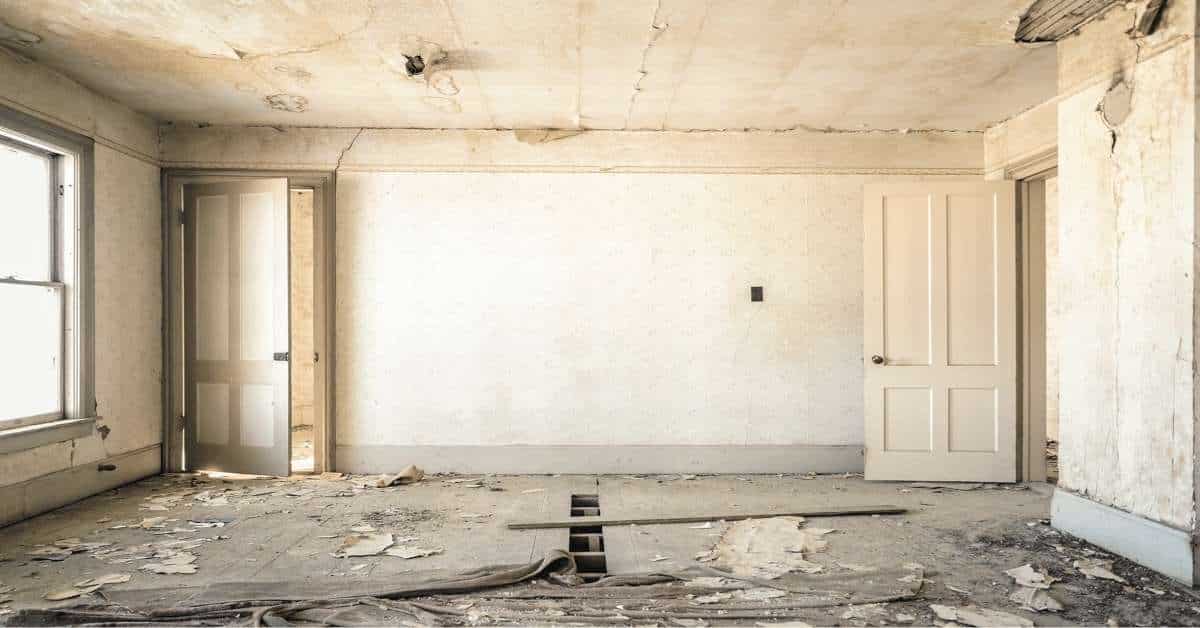
Image Source: Unsplash
As mentioned, there's a danger when it comes to dust exposure. Hence, it is essential that you can remove them from your space before you move in. By doing this, you will avoid inhaling the potentially dangerous particles in the air.
If you decide to move into the building while the dust still lingers, you are putting yourself at risk. You need to expel the dust first.
Fortunately, there are effective methods for removing dust after rigorous building work. Among these proven strategies is acquiring air purifiers from the top air purifier manufacturers.
Adding Air Purifier to Get Rid of Dust After Building Work
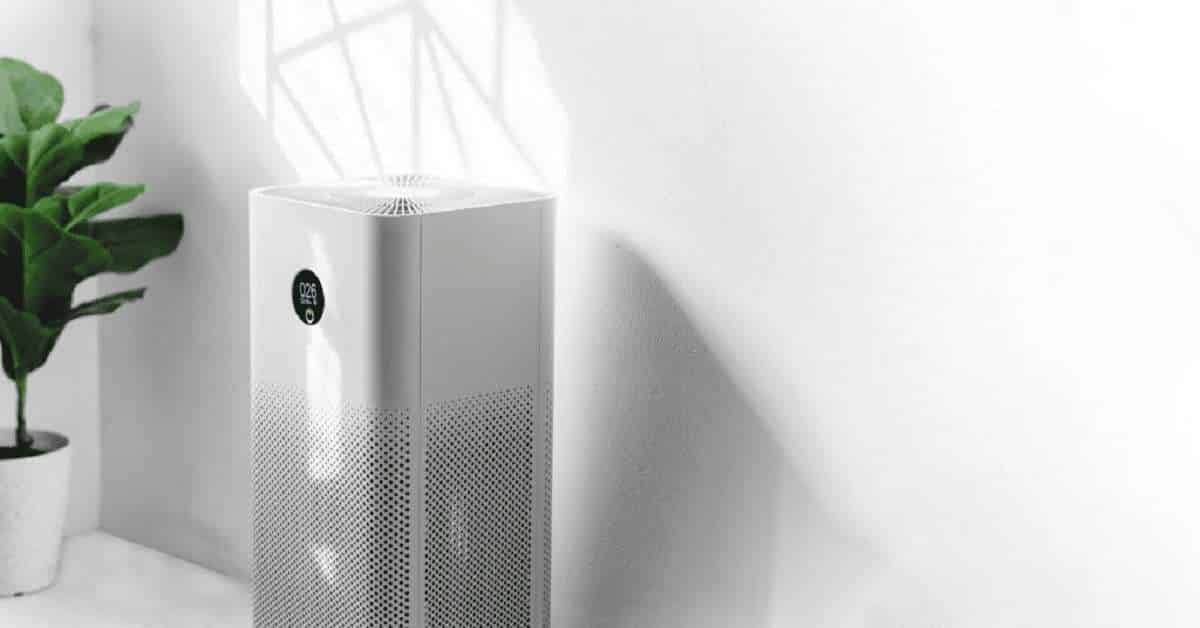
Image Source: iStockphoto
Air purifiers are designed to improve indoor air quality. Fundamentally, these air purifiers absorb various contaminants in the air. In most cases, these air purifiers specialize dust removal.
In many industrial applications, such as construction and building projects, air purifiers are a needed amenity. Contractors tend to use them to remove excess dust that is floating in the air. Of course, your building renovation or remodeling would also require the service of these air purifiers.
In fact, even without any of these projects, air purifiers are a must. Installing them would ensure that no airborne contaminants would cause respiratory problems such as allergies. Read on to learn more about these air purifiers and their benefits.
Why is an Air Purifier Important for Improving Air Quality?
Air purifiers are considered the best solution for improving indoor air quality. If you think that the air you breathe inside your space is riddled with contaminants, acquiring these devices is a must.
You see, there are various ways you can freshen up the air in your home or building. But none of them are as straightforward and effective as air purifiers. After all, these air purifiers are modern innovations that specifically tackle the various types of airborne pollutants.
Precisely, air purifiers capture allergens, dust, and pathogens. Depending on the air purifier, they can even reduce the presence of volatile organic compounds, chemical residues, and foul odor.
Picking the correct air purifier is another key to improving the air quality inside your home. Like other appliances and electronics, not all air purifiers are created equal. Later, we'll discuss the important considerations in choosing an air purifier for dust removal.
Air Purifiers For Dust Removal
Yes. Air purifiers effectively solve dust problems in buildings, homes, and offices. Specifically, air purifiers tackle airborne dust. Through the use of traditional filtration methods, air purifiers can trap dust and prevent them from circulating back into the air.
Many construction firms and building renovators highlight the importance of these air purifiers in their jobs. To minimize the presence of construction-related particulates, they tend to rely on air purifiers. They even recommend to their clients that they should operate an air purifier to reduce the dust build-up after a renovation project.
Are Air Purifiers for Dust Removal Safe?
Yes. Filter-based air purifiers are safe to use. They don't emit harmful emissions that could affect your health. They don't generate gaseous compounds or other residues that could pollute your air.
Ozone generators are the only type of air purifier you should be wary about. Just as their name suggests, these devices release ozone into the air. This gaseous compound is said to neutralize pollutants in the air.
However, keep in mind that ozone is a lung irritant. Exposure to it could lead to respiratory problems. Furthermore, the effectiveness of ozone in purifying airborne contaminants is still in question. It will help if you stick to filter-based air purifiers.
How Do Air Purifiers Work to Remove Dust After Building Work?
Air purifiers are equipped with several types of filters. They are the ones that capture the chemicals, substances, and pollutants mixed in the air. Essentially, it is in these filters where dust removal takes place.
Specifically, the air purifier has a HEPA filter, whose job is to capture microscopic contaminants. Ordinary filters don't normally work for dust removal. Dust is fine and tiny. They can easily pass through the holes of ordinary filtration mediums.
HEPA filters, on the other hand, have fibrous layers on them. These fibers create tiny holes--small enough that only air can pass through them. They are designed to trap minuscule particles, such as dust, allergens, and pathogens.
Removing Dust After Building Work by Air Purifier: Step-By-Step
Air purifiers have straightforward operation. Honestly, they aren't as complex as other people thought them to be. And that's the nice thing about them. The exact procedure of how these air purifiers operate is listed below.
- Air purifiers have fans on them. They use this to absorb the air in a given area.
- There's an inlet where the air enters. This leads to the filters where pollutant removal happens.
- Once the air passes through the HEPA filter, the contaminants that it carries (i.e., dust) will be trapped.
- The air exits the air purifier, but this time, it is free from various particles and substances.
The air purifier repeats this process to maintain the breathable air quality in your space . As long as these air purifiers run, newly introduced contaminants won't persist in the air.
How Long Does It Take for Dust to Settle After Removal?
When you have an air purifier, there's an assurance that airborne particles will be absorbed and trapped. It is the kind of relief that these devices can provide.
Fortunately, it doesn't take time for these air purifiers to handle common airborne contaminants. But of course, it still depends on the quality and specifications of your air purifier. For example, if your air purifier is too small for the room you intend to use it in, it will not be able to absorb contaminants completely.
The idea here is that you need to acquire powerful, efficient air purifiers for extensive dust removal. To help you on this matter, we have listed a guideline on how to choose an air purifier for dust removal below.
Why is an Air Purifier Important for Improving Air Quality?
As stated earlier, air purifiers work by removing various airborne contaminants in the air. It is an essential amenity for various residential, commercial, and industrial spaces because it specifically addresses the issue of indoor air pollution.
Indoor air pollution is a severe problem these days. Its degree of harm is worse than outdoor air pollution, given that the air in indoor spaces is usually enclosed. Unless you have exceptional ventilation, what gets inside your living spaces would remain.
If your home or building doesn't have systems that could eliminate the pollutants in the air, it is likely that you'll breathe them. And that's a problem, considering that these contaminants can trigger allergies, asthma attacks, and other respiratory illnesses.
Air purifiers could help deal with this problem. It works by removing airborne particles in the air. It can capture dust, debris, and different particulate matters. Even chemicals and substances are also under the scope of these air purifiers. If you want to breathe better in your building, air purifiers are a must.
Things to Consider in Buying an Air Purifier for Dust Removal
Not all air purifiers work the same. You need to find a unit that can accommodate your requirements. For removing dust after building work, the following factors should be taken into account:
- Room size - When buying an air purifier, always consider the size of room or space you are going to use it. If possible, get the exact measurement of the area. In this way, you can find an air purifier that provides a similar or better effective range. For example, if the area has a size of 500 square feet, you would need an air purifier that has a coverage of at least 500 square feet. Of course, the bigger the coverage is, the better.
- Clean air delivery rate - In a nutshell, the clean air delivery rate (CADR) specifies how much air the air purifier can process. Large air purifiers are known to have high CADR numbers, indicating their efficiency in absorbing air in large settings. Again, the higher the CADR rating, the better performance of the air purifier is when it comes to removing various particles in the air.
- HEPA filter - Since we are talking about dust removal, it is essential that the air purifier has the correct filters for the job. Here, we are talking about the HEPA filter. Technically speaking, the HEPA filter removes 99.9 percent of microscopic contaminants that are as small as 0.3 microns. Within this scale, invisible particles such as dust and pathogens exist. Only HEPA filters are rated to work effectively for dust removal. pic contaminants that are as small as 0.3 microns. Within this scale, invisible particles such as dust and pathogens exist. Only HEPA filters are rated to work effectively for dust removal.
Air Purifiers That Are Best for Removing Dust After Building Work
Many project contractors suggest that you use powerful air purifiers for dust removal. After the building renovation or construction, it is evident that dust and other fine particles would linger in the air. Ordinary cleaning methods, such as vacuuming, won't remove these airborne particles.
Highly efficient air purifiers are the needed tools for heavy-duty dust cleansing. In this context, the following air purifiers from HisoAir could give tackle the job completely.
| Coverage | Types Of Filters | |
| HisoAir Model HA588 | 85 m² / 915 sq ft | Pre-filter, HEPA13, Activated Carbon, Optional UV |
| HisoAir Model HA1300 | 84–144 m² / 904–1550 sq ft | Pre-filter, HEPA13, Activated Carbon |
| HisoAir Model HA1968 | 90–180 m² / 968–1937 sq ft | Pre-filter, HEPA13, Activated Carbon, Antibacterial (Optional: UV, Anion, Photocatalyst, etc.) |
1. HisoAir Model HA588
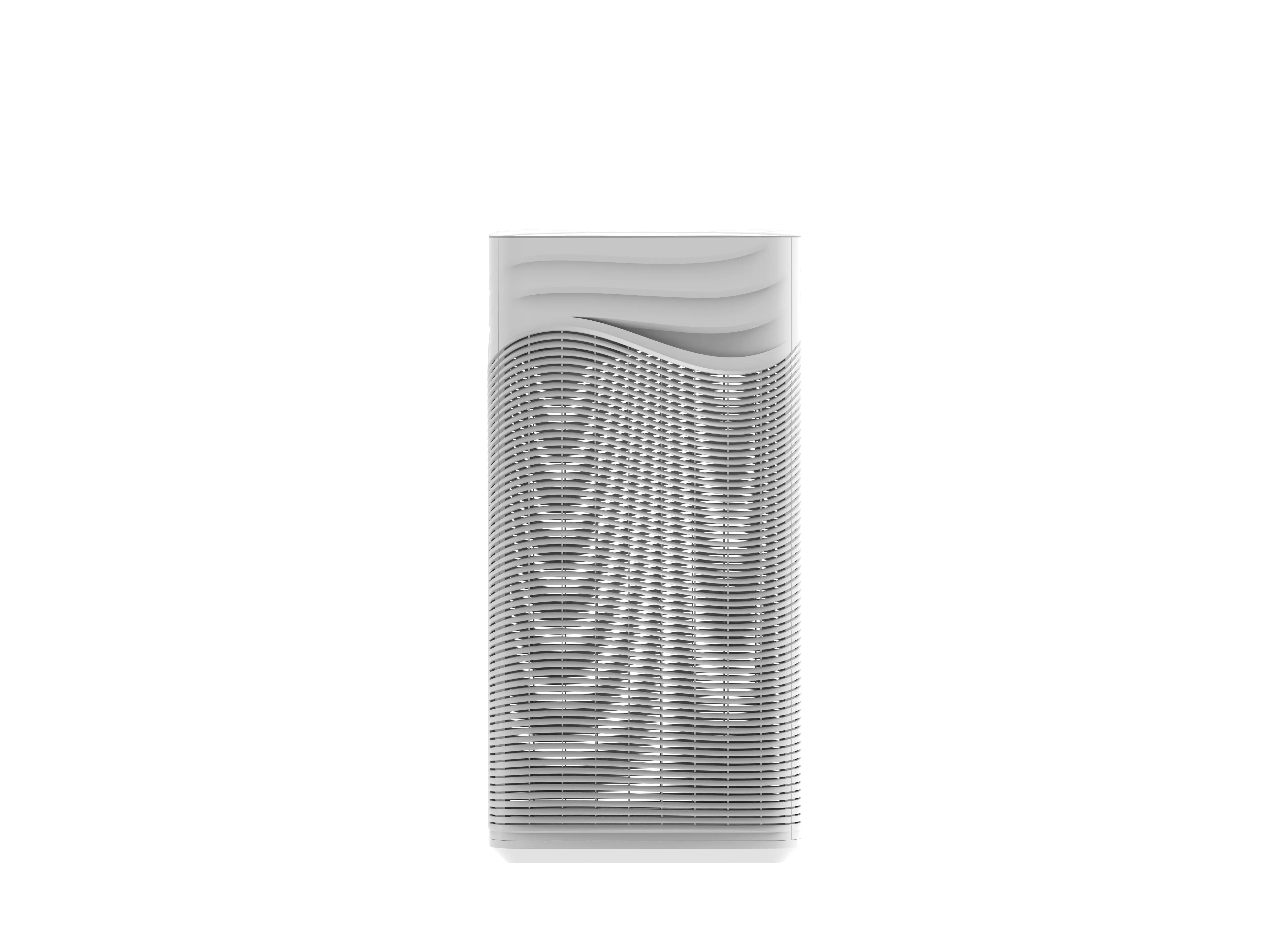
Image Source: HisoAir
If you're looking for a compact yet powerful solution for indoor dust and allergen control, the HisoAir Model HA588 is a great fit. With a CADR of 1000 m³/h, this standing air purifier can clean rooms up to 85 m² (915 sq ft). It features a multi-layer filtration system—pre-filter, HEPA13, and activated carbon—ensuring efficient removal of airborne particles, odors, and allergens. The optional UV module adds another level of germicidal protection, making it suitable for home, office, or medical spaces.
2. HisoAir Model HA1300
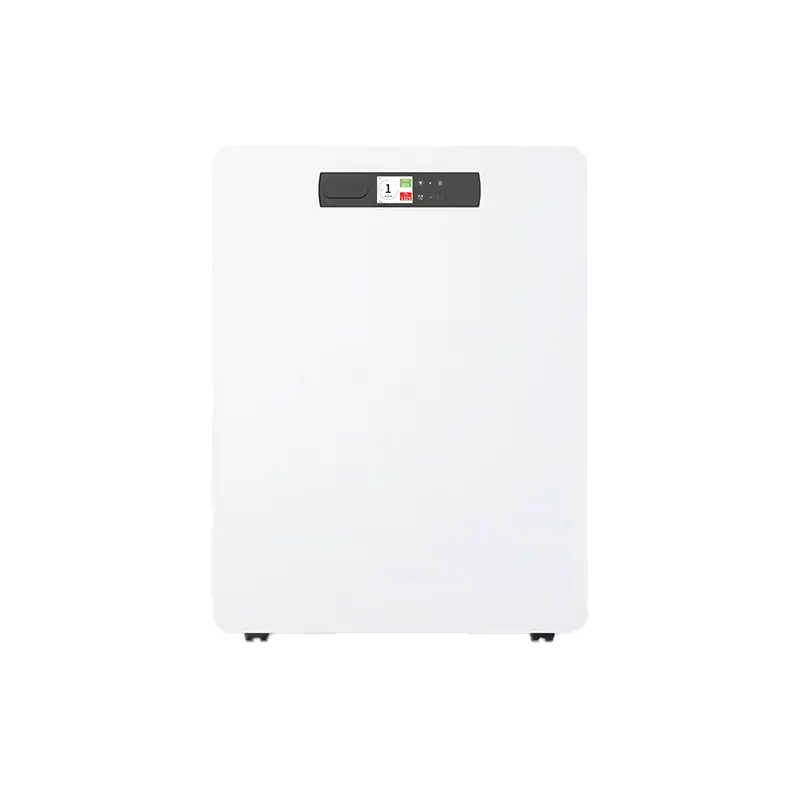
Image Source: HisoAir
The HisoAir HA1300 is perfect for households with children, schools, or open living areas. It boasts a dual CADR system—1200 m³/h (particle) and 400 m³/h (formaldehyde)—to cover large rooms from 84 to 144 m² (904–1550 sq ft). Its HEPA13 and activated carbon filters work together to eliminate dust, allergens, and VOCs. With an intuitive LED touchscreen, 6-speed settings, and ultra-quiet operation down to 38dB, it offers convenience and comfort in one sleek design.
3. HisoAir Model HA1968
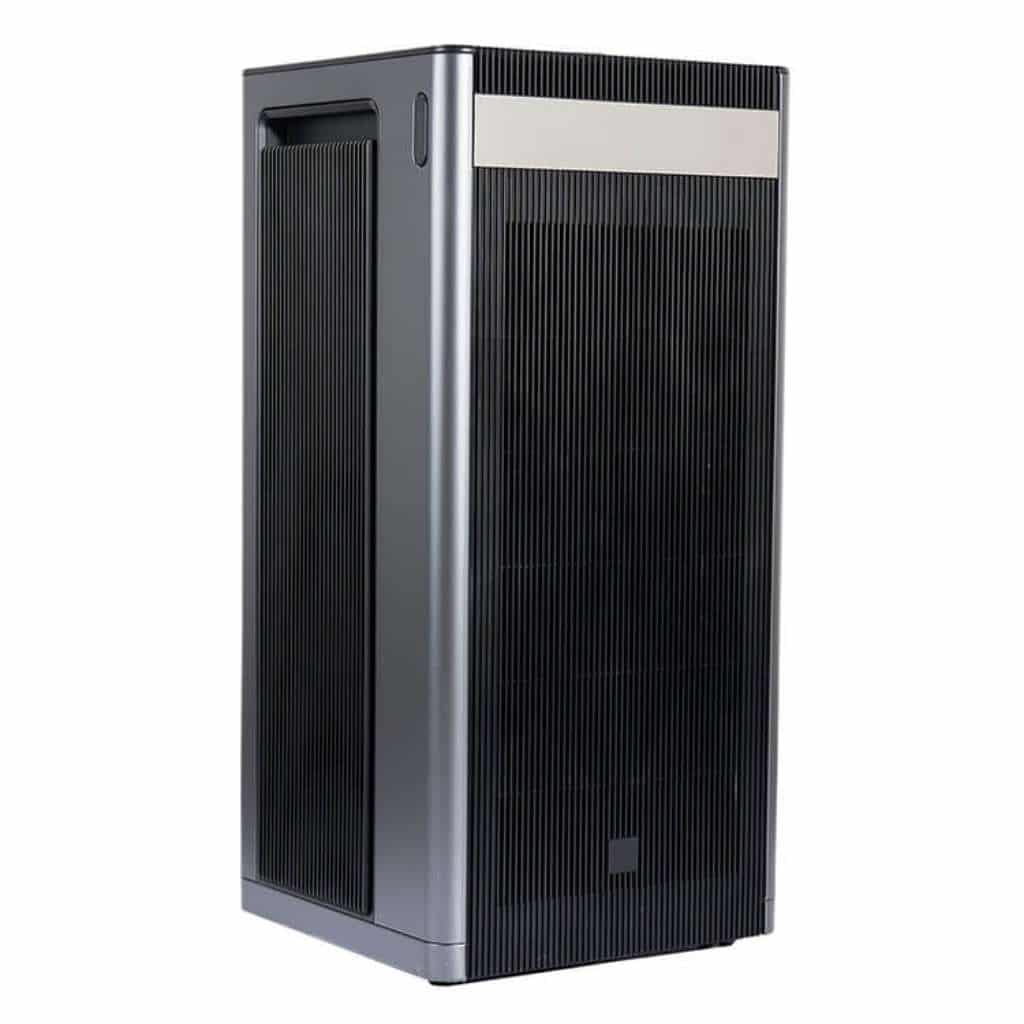
Image Source: HisoAir
For extensive air cleaning purposes, you need to check out the HisoAir Model HA1968. This particular air purifier has a powerful performance, as evident by its extensive Clean Air Delivery Rate of 1,500 m3/h. This means that it has sufficient airflow to absorb as much particulate matter in the air. Furthermore, it works in large spaces. Based on its standard ratings, the device can clean up to 1,900 square feet of space.
Of course, this air purifier is great for dust removal. After all, it features a rugged HEPA filter. It excels in capturing seemingly invisible particles in the air, such as dust, allergens, and pathogens. It also offers energy-efficient performance, accompanied by a user-friendly interface that lets you operate it conveniently.
How to Prevent Dust After Removal?
Cleaning the dust after a building construction or remodeling is an ordeal. It requires a lot of effort, especially if we are talking about a large space. Hence, the ideal next move here is to reduce the dust build-up.
If you don't want to dust from time to time, you should do the following procedures:
- Keep the dust out - The most effective means of reducing the presence of dust is to prevent it from entering your home or building. One way of doing this is to keep your windows and doors shut. You should also commit yourself to stopping anyone from entering your space with their shoes on. Get a good doormat, too.
- Groom your pets - Keeping your pets clean and groomed will keep them from producing dirt and dust. But don't clean them inside your home. Otherwise, hair and dust would spread. Do it outside so that you can keep the residues of your furry friends away from your space.
- Change your bedsheets - One should know that your bed sheets tend to generate dust. After all, that's where your skin particles go. Changing and washing them regularly would reduce the dust build-up. Of course, you should clean the pillows, mattress pads, and comforters.
- Minimize the clutter - It is also essential that you keep your space clean. The clutter can contribute to the dust accumulation in your space. If possible, you should minimize the things that you bring inside your home. The fewer your stuff is, the lesser the chances of dust build-up.
Other Ways to Remove Dust After Building Work
Aside from air purifiers, there are other strategies that let you clear out the dust build-up after massive construction work in your space. After all, some of the dust has settled on surfaces that air purifiers would have difficulties absorbing.
Among these methods, prioritize doing the following:
Deal With the Soft Furniture and Carpets
It is likely that dust has settled in your carpets and furnishings. Even if you have covered them during the duration of the projection, dust can still sneak in. You should remove the dust that lingers on them. In this way, you can prevent unwanted damage and deterioration in their appearance.
Use a vacuum and run it through the carpets and soft furnishings. Use the special attachments on the vacuum so that you won't miss the dust stuck on crevices and folds. If possible, take out the carpets and soft furniture outside. In this way, you can beat the dust out of them.
Of course, don't forget to vacuum your mattresses and bed. It would be better if you repeat the procedure to remove the dust entirely.
Dust the Walls
Not all dust floats in the air. Some of them stick to the walls. Try sticking your hands on them. You'll be surprised that your palms are filled with powdery stuff.
Hence, it is essential that you can dust them completely. And here, vacuums aren't the best cleaning tool. Instead, you should just use a clean damp towel and wipe it on your walls. If there are hard-to-reach parts in the walls, you would need to wrap the towel around a broom or a pole.
You may want to vacuum pediments and moldings. There's a good chance that dust will gather and hide in their crevices.
Collect the Dust on Baseboards and Ledges
One should know that baseboards and ledges are among the most susceptible places where dust can settle during construction work. Even if the building job is over, dust tends to build there. Because of this, you need to wipe them regularly.
To do this, you simply need to utilize dryer sheets for dust removal. You only need to wipe the dryer sheet throughout the ledges and baseboards. Once you have gathered enough dust, throw the used sheet in the bin or garbage disposal.
You may also use rags in the process. Damp them slightly so that you can collect more dust efficiently.
Sweep The Floors
Don't forget the floors. Dust is definitely there. Vacuuming the floor is the most optimal solution here. But it is always recommended that you use a vacuum that is HEPA certified. In this way, you can guarantee that it can capture even the microscopic dust.
Once you are finished vacuuming, you should mop the floor. Do this regularly to keep the presence of dust under control. Always remember that vacuuming comes first before mopping.
Also, don't forget that you use a compatible floor cleaner on your floors. In this way, your flooring won't get damaged. At the same time, compatible floor cleaners help in the efficient removal of dust and stain.
Conclusion
Here, we can see the harms of dust that are derived from building work. You shouldn't let them be. Otherwise, you'll breathe them eventually, which, in turn, could cause harmful effects on your respiratory health.
Air purifiers are presented to be the most effective means of removing dust, especially those that are floating in the air. Hence, it is essential that you get powerful air purifiers that can do fast and efficient removal. HisoAir air purifiers are among the best options you have for these air cleaners. Visit HisoAir and explore all of its provisions.
Check our other blogs, too!


